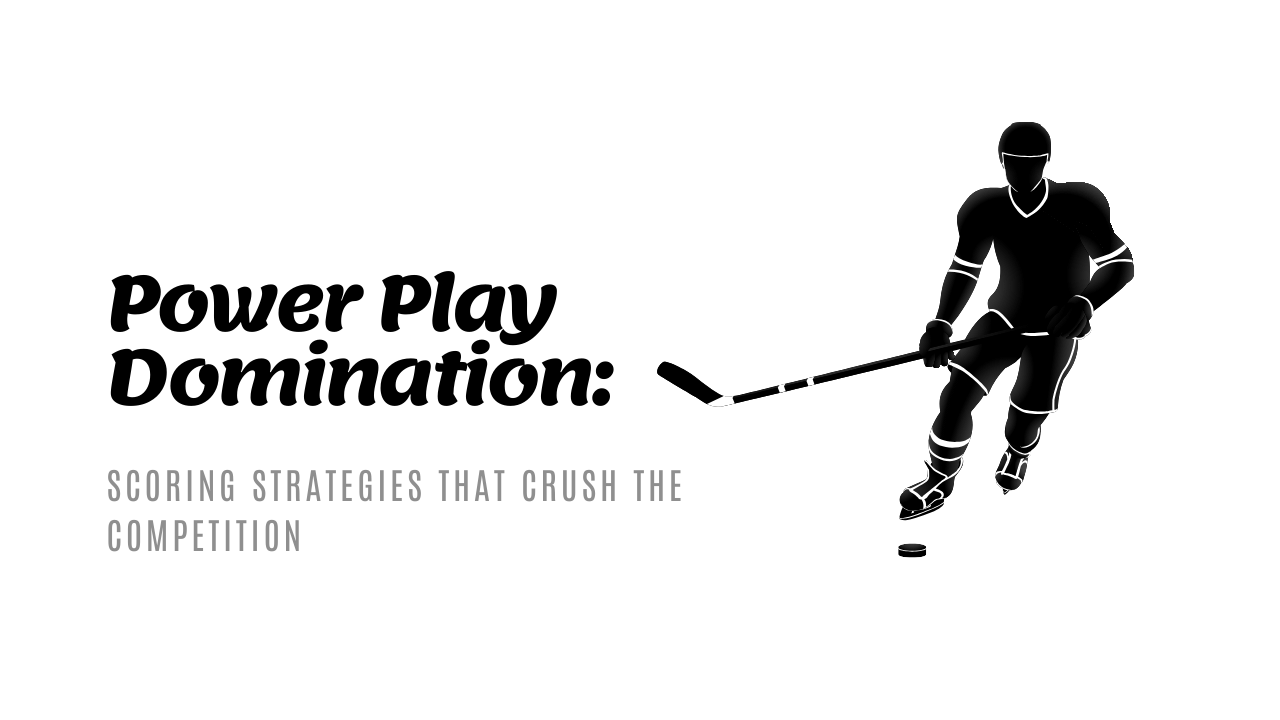Ever wondered why your team struggles during power plays? It’s a make-or-break moment in hockey that can swing the result in your favor. Power play strategies aren’t just about having an extra player on the ice; they’re about maximizing that advantage to score. In this post, you’ll learn about key power play tactics to enhance your game, like the Umbrella and 1-3-1 formations.
Whether you’re a seasoned player or new to the rink, these tips will help you dominate when it counts the most. Get ready to up your game and make every power play count.
Understanding Power Play Strategies in Hockey
Power play strategies in hockey can be game-changers, giving teams an advantage when playing with a numerical edge. Let’s delve into the different types of power play strategies and the key components that make them successful.
Types of Power Play Strategies
- Umbrella Strategy: In the umbrella power play setup, players form a diamond shape with one player positioned at the top of the offensive zone. This player acts as a quarterback, distributing the puck to create scoring opportunities.
- Overload Strategy: The overload power play involves stacking one side of the offensive zone with more players to outnumber the penalty-killing opponents. This strategy aims to overwhelm the defense and create openings for shots on goal.
- 1-3-1 Strategy: The 1-3-1 power play formation consists of one player on the blue line, three players across the slot area, and one player in front of the net. This setup focuses on quick puck movement and maintaining pressure on the defense.
Each of these strategies offers a unique approach to capitalize on power play opportunities, requiring precision, coordination, and quick decision-making to outsmart the opposing team.
Key Components of a Successful Power Play
- Player Positioning: Proper positioning is crucial in power plays to maintain passing lanes, create scoring chances, and support teammates effectively.
- Puck Movement: Fluid puck movement keeps the defense guessing and opens up shooting lanes. Passing with purpose and timing is essential for a successful power play.
- Player Roles: Defined roles for each player, such as playmaker, shooter, and net-front presence, ensure that everyone contributes effectively to the play.
- Communication: Clear and concise communication on the ice helps players coordinate their movements, call for passes, and anticipate plays, leading to cohesive power play execution.
By mastering these key components, teams can execute well-structured power plays that put pressure on the opposition and increase their chances of scoring goals during advantageous situations.
[To learn more about power plays and strategies in hockey, check out Hockey IQ for additional insights.]
 Photo by RDNE Stock project
Photo by RDNE Stock project
Implementing Effective Power Play Strategies
When it comes to implementing effective power play strategies in hockey, practice and strategic analysis play a crucial role in achieving success on the ice. By focusing on specific drills and exercises tailored for power play scenarios and understanding your opponent’s penalty kill strategies, you can elevate your team’s performance and increase scoring opportunities.
Drills and Exercises for Power Play Practice
To enhance your team’s power play performance, incorporating targeted drills and exercises during practice sessions is essential. One effective drill is the “5-on-4 Rush,” where the team practices transitioning quickly from defense to offense when having a one-player advantage on the ice. This drill helps players improve their speed, passing accuracy, and decision-making under pressure.
Another valuable exercise is the “Net-front Presence Drill,” emphasizing players’ positioning in front of the net during power plays. By practicing tipping shots, screening the goalie, and retrieving rebounds, players can develop the skills needed to create scoring opportunities and capitalize on rebounds effectively.
Analyzing Opponent’s Penalty Kill Strategies
Understanding and adapting to your opponent’s penalty kill strategies are key to breaking through their defense during power plays. Start by analyzing how the opposing team sets up their penalty kill formation, whether they use a box or diamond setup, and identifying potential gaps or weaknesses in their defense.
By recognizing patterns in the opponent’s penalty kill strategies, you can make informed decisions on adjusting your team’s positioning and puck movement to exploit openings in the defense. Encouraging players to read the defense, communicate effectively, and make quick, decisive passes can disrupt the opponent’s penalty kill structure and create scoring opportunities.
By combining rigorous practice of power play drills with strategic analysis of the opponent’s penalty kill strategies, your team can enhance its effectiveness during power play situations and secure more goals on the scoreboard.
Stay tuned for more insightful strategies to elevate your game and outmaneuver the competition on the ice.
Common Mistakes to Avoid on Power Plays
Power plays are crucial moments in a hockey game, where the team has the advantage due to an opponent being penalized. To make the most of these opportunities, it’s essential to avoid common mistakes that can hinder your team’s success.
Overpassing and Lack of Shooting
One common mistake to avoid on power plays is overpassing and not taking enough shots on goal. Sometimes players get caught up in trying to make the perfect play by passing the puck around excessively instead of taking the shot when the opportunity arises. Remember, shooting is essential during power plays as it creates scoring opportunities and puts pressure on the opposing team’s defense.
Don’t hesitate to take the shot when you have a clear chance – it could lead to a goal and turn the game in your favor.

Poor Puck Possession and Turnovers
Another mistake that can cost your team dearly on power plays is poor puck possession and turnovers. Losing control of the puck or making careless turnovers can quickly shift the momentum in favor of the opposing team, wasting the advantage of being on a power play. To avoid this, focus on maintaining good puck possession through strong stickhandling skills and smart passes.
Work on minimizing turnovers by making quick decisions and staying composed under pressure. Remember, every second counts during a power play, so make each possession count.
When your team avoids these common mistakes and plays smart on power plays, you increase your chances of scoring and tilting the game in your favor. Stay focused, communicate effectively, and make the most of every opportunity on the ice.
For more tips and strategies on improving your power play performance, check out Hockey Training Tips and How to Execute the Perfect Power Play.
Conclusion
Effective power play strategies are a game changer in hockey. Mastering techniques like the Umbrella, Overload, and 1-3-1 formations can transform your team’s performance.
Key points you learned include the importance of puck movement, player positioning, and exploiting the defense’s weaknesses. These strategies are not just for the pros; they are for anyone who wants to step up their game.
Practice these tactics regularly. Implement them in your drills and games. Consistent effort will elevate your performance on the ice. Stay focused, stay determined, and watch your power play become an unstoppable force.

